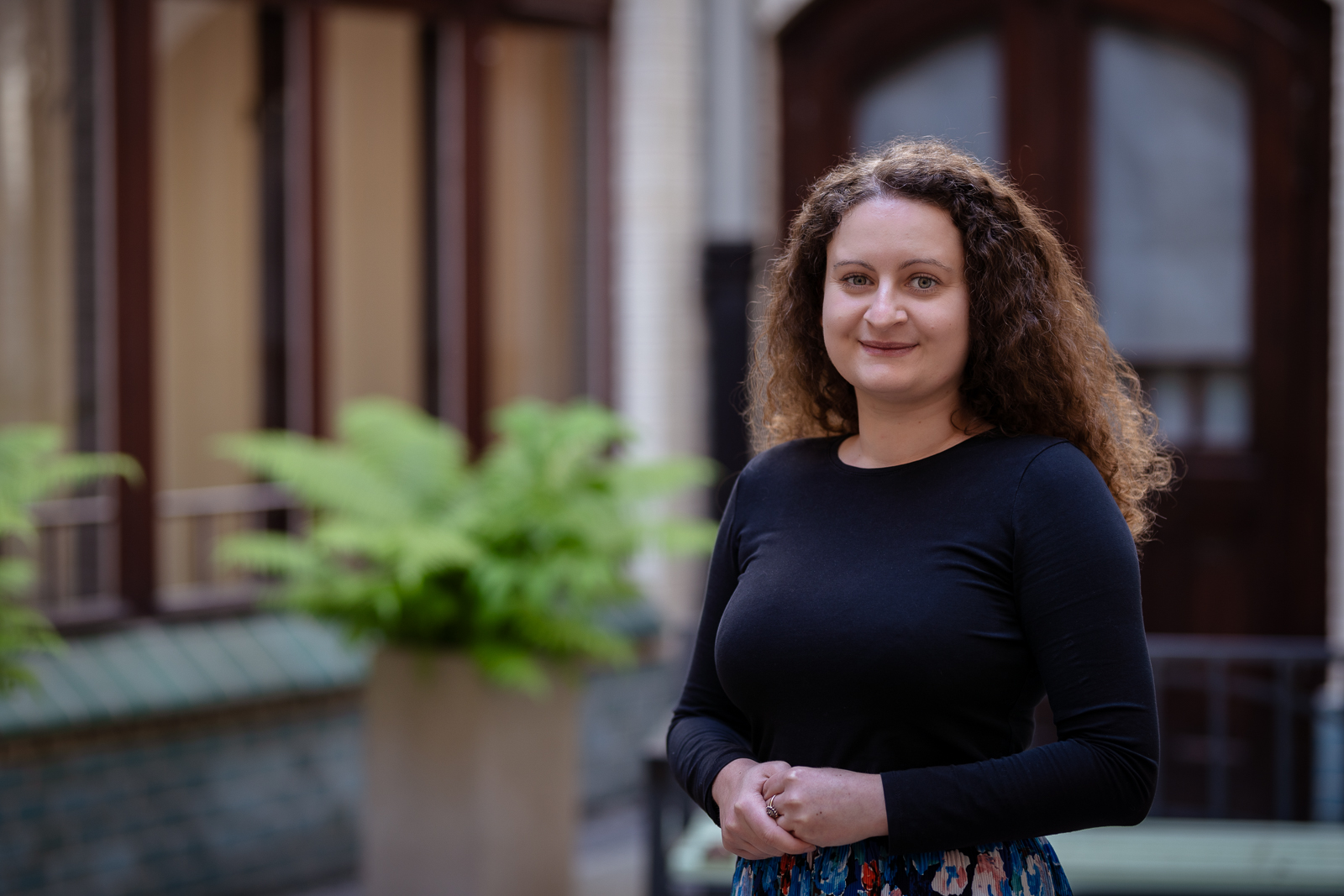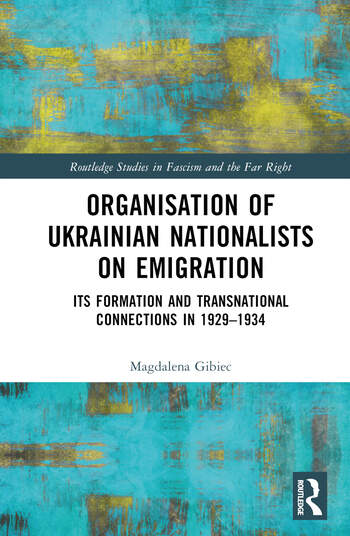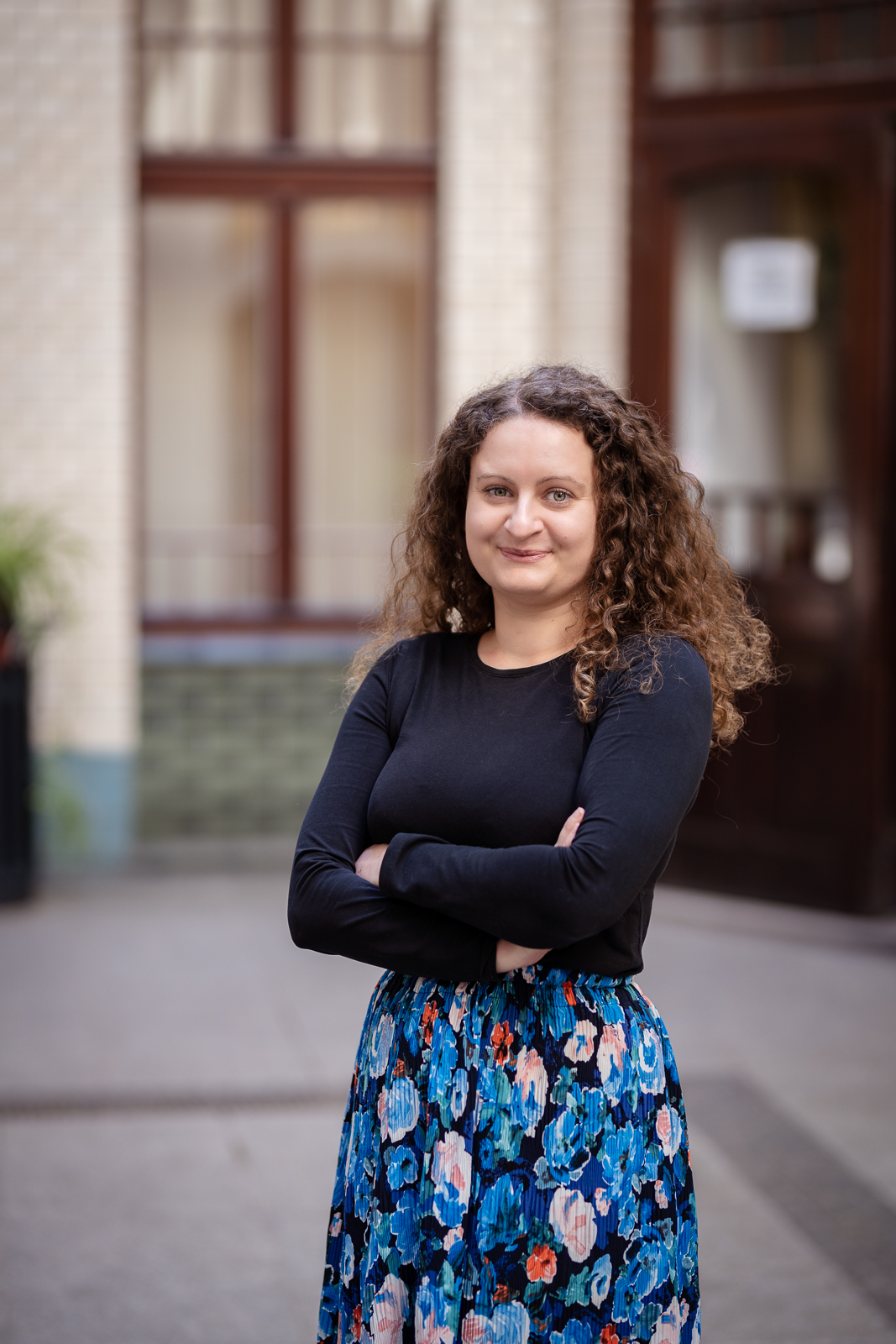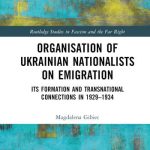
On the Trail of the Lost Archive
While conducting research in the Lviv archive, dr Magdalena Gibiec comes across two unusually labeled folders. Intrigued, she borrows them, not yet knowing that this decision will completely change the course of her research and result in a publication by the prestigious academic publisher Routledge.
Talking with dr Magdalena Gibiec from the Historical Institute of the University of Wrocław, the author of the monograph titled “Organisation of Ukrainian Nationalists on Emigration. Its Formation and Transnational Connections in 1929–1934“, which has just been released, we discuss what she discovered in Ukraine.
Ewelina Kośmider: Actually, the history of your book began in 2017, on the last day of a months-long query at the Central State Historical Archive in Lviv. And it started sensationally…
Dr Magdalena Gibiec: I went to Ukraine with a different topic in mind, concerning Polish nationality policy in Eastern Galicia during the interwar period, which I was pursuing as part of my doctoral studies. During the query, while examining the files of the Lviv Appellate Court, I came across documents related to the assassination attempt on the Minister of Internal Affairs of the Second Republic of Poland, Bronisław Pieracki, which took place in 1934. These were two unusually labeled folders that did not fit with the other signatures related to administrative matters of the Court.
Did you know from the beginning just how significant these documents were for the history researcher?
I applied for access to the units, and as it turned out, according to the attached registry, probably no one had reviewed them before. From the first page, I knew it had to be the so-called Senyk Archive, which was commonly believed to be lost at the time. However, at that time, I did not have detailed knowledge about it.
What is the Senyk Archive?
It’s a collection of correspondence exchanged among the key leaders of the Organisation of Ukrainian Nationalists in exile for 5 years – from year 1929 to 1934. Primarily between the leader of the OUN, Yevhen Konovalets, and his closest collaborators. The archive was kept in the house of one of the OUN activists, Omelan Senyk, and after his arrest in Prague, it fell into the hands of the Poles thanks to a brief intelligence cooperation between Poland and Czechoslovakia in the 1930s. Initially, the authorities did not recognize its significance (it was considered a literal archive unrelated to the present) – it passed around for a long time until it was finally handed over for translation. Unfortunately, the whole process took too long. I say “unfortunately” because in the Senyk Archive, there was evidence that Ukrainian nationalists were planning the assassination of Minister Pieracki. However, this was discovered afterwards. So, gaining access to the Archive did not change the course of events, but it served during the trial, in which one of the accused was Stepan Bandera. I must emphasize that I came across a copy of the archive in Lviv, containing documents translated into Polish and selected on the basis of their usefulness in the trial regarding the assassination of Minister Pieracki. It’s about 700 letters, or 1500 pages. We don’t know how many pages the whole Archive contained and what happened to the originals; some were probably burned by Ukrainian nationalists, and some went missing.
What is the history of the search for the Senyk Archive?
For years, both Polish and Ukrainian historians wondered whether the Senyk Archive existed at all, and if so, whether it was real or perhaps fabricated for the trial. During my private investigation, it turned out that some historians unofficially knew that the Senyk Archive was in Lviv, but it was inaccessible to researchers. It was classified, and the trace of it constitutes a note attached to the folder, stating not to release these materials until 2030. However, probably around 2010, archive employees decided that there were no reason why these materials should not be available to readers.
How does a historian feel when encountering documents that have been inaccessible for decades?
First of all, I was lucky that no one before me came across these signatures. Secondly, I was excited about the new research material of such great significance. But also, there was concern about whether I would be able to use the gathered material properly. After consultations, including with my supervisor, prof. Grzegorz Hryciuk, as well as with prof. Włodzimierz Mędrzecki, I decided to suspend my previous research and devote all my energy to researching the Senyk Archive and understanding the activity of the Organisation of Ukrainian Nationalists functioning in exile, which had not been the subject of broader research so far. I hope I succeeded.
How does the uncovered correspondence help understand the emerging Ukrainian nationalism in the interwar period?
It seems to me that the fears of those who decided to keep the Senyk Archive secret were unfounded. When I analyzed the materials, I concluded that they did not significantly change our knowledge about the activities of Ukrainian nationalists because these studies are already well advanced both in Poland and in Ukraine. However, it is essential that the discovered letters allowed me to delve into the movement, peek behind the scenes of its operation. Correspondence was the main means of communication among Ukrainian nationalists living both in North America and many European countries. The letters were exchanged among their closest collaborators; the senders wrote to trusted individuals expressing their initial thoughts, not processed over time. These documents allowed me to reinterpret individual events and analyze the movement from a different perspective – its key figures; writing about their experiences and feelings in real-time.
What was the activity of this part of the Organisation of Ukrainian Nationalists, which resided abroad?
Ukrainian nationalists had two main goals. The first was to consolidate Ukrainian emigration under their leadership, which was strongly fragmented during the interwar period. The second goal was political lobbying. Nationalists tried to exploit the dynamically changing international situation and relations between individual states to gain support for the Ukrainian cause and to gain allies in the future struggle for independence. To this end, they established contacts with politicians from various factions, intellectuals, journalists, and also tried to influence international public opinion, for example, by publishing bulletins in foreign languages. In this respect, their activities were particularly focused on Western European countries and the League of Nations. They managed to achieve these goals only to a limited extent, but certainly, this part of their activities is worth noting.
It is very surprising – as you write in your book – that the Organisation of Ukrainian Nationalists cooperated not only with the German Abwehr but also with Poland’s neighbors – Lithuania and Czechoslovakia. What was the purpose of this cooperation?
The goals varied depending on the country. Firstly, according to the saying “the enemy of my enemy is my friend”, the possibility of destabilizing the Polish state was crucial for all these countries. But it worked both ways. Ukrainian nationalists were supposed to provide, for example, intelligence information in exchange for support or material benefits. Both Germany and Lithuania financially supported the at different times. Czechoslovakia, on the other hand, provided them with a refuge; they could function relatively freely and organize wider meetings there.
Your book also touches on the topic of smuggling weapons or explosives through Czechoslovakia by OUN members, which were used for the assassination of Minister Pieracki and other sabotage actions.
Yes, here Czechoslovakia also played a significant role. Usually, weapons were smuggled through Cieszyn or the mountains. Partially also through the Free City of Gdańsk from Germany. Mykola Lebed, who was responsible for preparing the assassination of Pieracki, also crossed this route, but he was stopped, arrested, and stood trial. It’s worth adding that some Ukrainian nationalists underwent military training in the Free City of Danzig and Germany.
And how much did Germany know about the activities of the OUN? Was the German Reich an ally of the Ukrainian nationalists? There are different opinions on this matter, but it seems that the OUN and the Ukrainian cause were instrumentally treated by the Reich.
Ukrainian-German cooperation is a complicated issue. The OUN was not the only Ukrainian emigrant organization operating in Germany – there was also a strong group subordinate to hetman Pavlo Skoropadsky. These organizations competed with each other for support from different political circles in Germany, giving the Reich room to apply instrumental policies towards them. There was certainly an ideological similarity between the Nazis and the Ukrainian nationalists, but support for the OUN also reached them before Hitler came to power. However, I would be cautious about claiming that this was a close and high-level cooperation. It was based more on personal contacts than systematic German support.
Just before the signing of the non-aggression pact between the Reich and Poland, Yevhen Konovalets, the head of the OUN, was invited to Göring’s headquarters, where the Germans presented their demands regarding the organization’s further activities. Interestingly, the Reich wanted Ukrainian nationalists to reduce their sabotage activities in Poland and focus on Romania and Czechoslovakia…
… and yet the assassination of Minister Pieracki was still carried out. Here we come to the issue of division between Ukrainian nationalists in exile and those operating in the Second Republic of Poland. The conflict between the two groups was strong, which ultimately led to the division of the movement in 1940 into OUN-M and OUN-B. But this division existed from the very establishment of the Organization of Ukrainian Nationalists. It was primarily a generational conflict. So we have the “old” ones – experienced emigrant activists who participated in the fighting during World War I and after its end, and who laid the foundations of Ukrainian nationalism, and the “young” ones – domestic OUN activists directly under the “occupier”, very radicalized, and blaming the older ones for the failure of the fight for independence. The first ones adopted a more pragmatic model of action, based on political lobbying and assessing what they could achieve on the international stage. It is unknown why the assassination of Minister Pieracki was carried out despite German demands to halt sabotage actions in Poland. It can be speculated that the young members, against recommendations, decided to carry out this assassination. Perhaps Konovalets, aware of the tense situation between the two groups, unwilling to lose their trust, agreed to the assassination.
Do you think that if there hadn’t been a split between these two factions, OUN-M and OUN-B, a different scenario would have been possible in 1943 in Volhynia? Would history have unfolded differently if the “emigrant” faction had more influence on the faction in Eastern Galicia?
It’s hard to answer that question definitively, but there is such a possibility. The division into OUN-M and OUN-B was, among other things, a consequence of the assassination of Yevhen Konovalets in 1938. I absolutely don’t want to justify the actions of emigrant activists; in the context of their attitude towards Poles, they were guided more by pragmatism than morality. Konovalets on many occasions, as shown by correspondence found in the Senyk Archive, indicated that conducting various anti-Polish actions in the Republic of Poland was not in his interest because it hindered his activities on the international stage. He also believed that terrorist activity should not be the goal of the OUN. There were even situations when he directly distanced himself from the activities of Ukrainian nationalists in Eastern Galicia. However, it is difficult to predict how he would have behaved in the face of the war outbreak. Especially since the situation between Poles and Ukrainians in the Second Republic of Poland was increasingly tense, and his authority among young OUN activists was declining.
Currently, due to the political situation, research topics related to Polish-Ukrainian history seem to be difficult…
It is a topic that raises many controversies, but I believe that historical research should not be subordinate to the political situation. I tried not to view the issue of Ukrainian nationalism from a Polish or Ukrainian perspective, but to understand different points of view. Above all, I treated the OUN as an interesting example of an organization that, after the defeat of the fight for independence, tried to gain various kinds of support on the international stage by building networks of contacts and political lobbying. And that was what interested me the most: to what extent they succeeded, how they functioned, what relationships they managed to establish… My goal was to thoroughly examine their activities, and I leave the moral judgment to the readers.
What are your next research plans?
First of all, I would like the book to be published in Polish as well. I hope it will be possible to publish it later this year. I am certainly not closing the door on research into the activities of Ukrainian nationalists. The Senyk Archive opened up new research fields also in the context of Polish-Ukrainian relations. Currently, I plan to focus on comparative research between two assassinations – Minister of Internal Affairs Bronisław Pieracki and King Alexander I of Yugoslavia, which took place in the same year. These events will serve as a starting point for analyzing the development of nationalism among national minorities and the escalation of violence in the interwar period.
Translated by Oliwia Kowalińska (student of English Studies at the University of Wrocław) as part of the translation practice.







